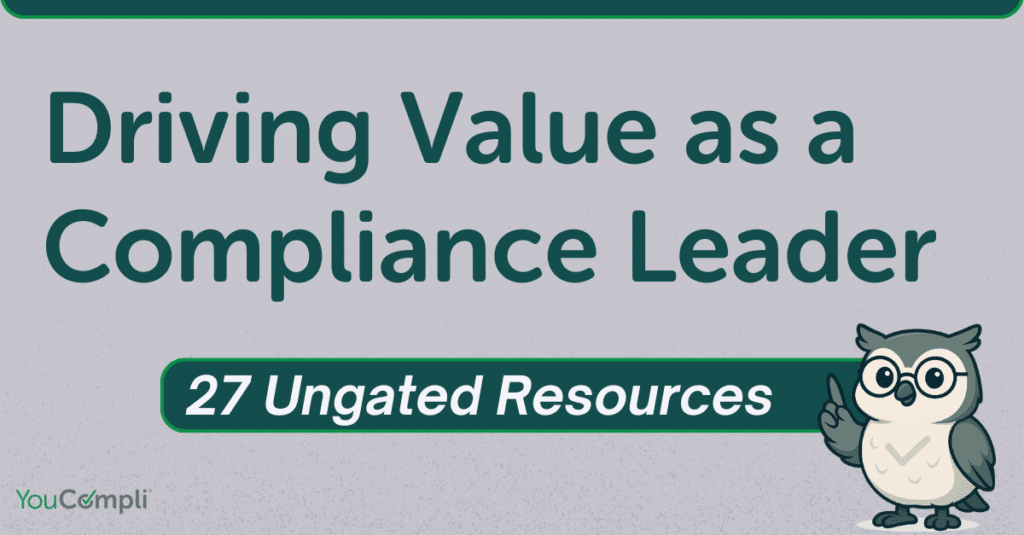In this blog, learn how to go on offense following a regulatory compliance audit or inspection, so you’re well-prepared for the next one. Using sports training analogies, the authors present a better way to handle ongoing inspections and audits in healthcare systems.
Continue readingHow to Prepare for New CMS Final Rules and Transmittals
It’s the nature of our mission to stay on top of what’s happening in the world of healthcare compliance. And right now, that focus couldn’t be more important.
These are unusual times, and Compliance is feeling the impact. The Medicare Fiscal Year 2026 Final Rules were expected to be late but came through on time. However, hospitals must still rush to analyze and respond with action plans in short order. CMS transmittals are also likely impacted by the government shutdown (more on that later).
That leaves many hospital compliance teams unprepared and under-resourced to cope with fast-coming changes. The price of noncompliance, even under extenuating circumstances, is reimbursement risk.
Two Areas Needing Compliance Attention: Final Rules and Transmittals
- Final Rules – Legally binding federal regulations that establish new policies in particular areas of healthcare.
- CMS Transmittals – Internal instructions for updating CMS operational manuals to reflect new or changed policies.
Two Important CMS Timelines: Fiscal Year and Calendar Year
The CMS guidance for healthcare comes with its own deadlines attached, and every year there are two important and separate timelines for fiscal year and calendar year Final Rules.
In healthcare, fiscal year guidance typically has an October 1 effective date, and that Final Rule usually drops in August. This year, YouCompli analysts got through the fiscal year Final Rules incredibly quickly, because CMS cut a lot of the material in the preamble, and that allowed more efficient review and analysis.
Effective Date of Calendar Year Final Rule Coming Up Fast
As every seasoned compliance professional knows all too well, CMS puts out a handful of big, omnibus rules for different areas of health care on an annual basis. This time of the year brings us the final rules affecting outpatient costs and billing. These areas usually get addressed during the calendar year, and these calendar year communications started dropping this year on November 5. That gives an effective date of January 1 of the next year.
It’s important to get these annual changes synthesized and implemented in a health care organization because they cover the entire year. Even when Rules drop at the usual time (and not during a government shutdown), the short time frame to the established effective date still puts pressure on providers to analyze and develop a compliance action plan. That’s where having a partner like YouCompli already breaking down these rules and translating them into actionable business requirements is essential.
Transmittals Could Be Delayed and Affect Claims Processing
On top of concerns about Final Rules delays, CMS transmittals ceased to come out on September 30. Transmittals are typically issued on a running basis as they come up. In a given month, you can have anywhere from 15 to 150 transmittals come out.
A CMS transmittal is not the same as a Final Rule. They are two distinct types of guidance documents from the CMS. Transmittals are official documents to communicate new or changed policies, procedures, claims and other operational guidance to Medicare administrative contractors (MAC), regional offices, and healthcare providers. The communications update specific CMS program manuals, instructions, and other documentation to ensure consistent implementation of Medicare rules.
MACs Also Risk Claims Backlog with Transmittal Delays
Another job of a transmittal is to direct the MACs on what to do in processing claims. These third-party contractors are hired by CMS to administer claims, and they can get backlogged on their instructions and claims processing when transmittals run late.
Any claims processing delays impact providers, so it’s important to keep an eye on when these transmittal communications come out, especially if it drags out for weeks. If MACs struggle with claims processing because they can’t keep up with the updates, providers lose money.
Whether it be through time-related loss, because then they have to reissue claims with fixes and things of that nature, delays directly impact revenues. That’s not good at a time when health systems are already under the gun.
Solution: Proactive Compliance to Know, Act and Verify
If you’re a YouCompli customer, you wouldn’t have to scramble to prepare for last-minute changes, because we would handle it.
If communications are ever delayed, creating a time crunch, let us act as your analysist team, grabbing communications as soon as they come out, and breaking it down for you. We capture the necessary data and deliver it, along with easily understandable business requirements.
You’ll know what you need to do to comply, so when the next Final Rule or transmittal hits your inbox, you’re ready to run with updating procedures, training and other requirements.
We suggest getting on board with us now, so when that time comes, you’re not struggling with these risks and delays.
About the Author
Nate Ward, J.D. is the Manager of Compliance and Content Development at YouCompli Software. He comes from a deep background in healthcare compliance and the legal field. Nate leads a team of experts who read regulations, analyze how they apply, and recommend action plans for healthcare compliance.

27 Ungated Resources for Compliance Leaders and Teams
Compliance professionals sometimes feel undervalued in comparison to other functions in their organization. They think leaders and colleagues don’t really understand what they do.
These resources will help. Packed with ideas, tips and recommendations, these pieces were written by professionals with many years of compliance experience.
You can quickly skim for articles that relate to your needs and interests. Bookmark this page as a reference for future questions or projects.
OIG Cites Fraud, Waste and Abuse Concerns with Skin Substitutes
Many compliance professionals rely on HHS OIG focus areas as they perform risk assessments and plan subsequent auditing and monitoring activities. In November 2024, the OIG added an item to their Work Plan describing their intention to review Medicare Part B payments for skin substitutes.
This blog explores the implications for compliance and what health systems need to be aware of.
Continue readingKnow the Compliance Risk for Certain Anesthesia Services
A good healthcare compliance program is all about reducing risk, both in patient care and in financial reimbursement. This detailed blog by compliance expert, CJ Wolf, will bring you up to date on the compliance risks associated with certain anesthesia services.
Continue readingAudit Readiness? How about Audit Etiquette?
In this blog, experts offer the real scoop on audit readiness in healthcare. Learn the unfiltered truth about compliance audits and what audit etiquette means. Get essential tips on preparing for audits, the role of healthcare compliance auditors, and what to do (and what not do) during an audit.
Continue readingMitigating Conflicts of Interest that Drive Profit Over Health
A conflict of interest (COI) in healthcare occurs when a person or organization involved in medical decision-making, such as a doctor, researcher or healthcare administrator, has a secondary interest (financial, professional or personal) that could compromise or influence their objectivity and clinical judgment.
This secondary interest has the potential to affect decisions about diagnosis, treatment, or research in a way that’s not aligned with the best interests of the patient or public health.
Continue readingHow to Avoid Compliance Risk in Peripheral Vascular Reimbursement
Peripheral vascular disease (PVD) reimbursement is fraught with potential compliance pitfalls. With increased scrutiny and worrisome statistics about improper payments, healthcare providers must identify and mitigate any PVD compliance risks that could jeopardize their operations.
This expert-written blog addresses the pressing concern of compliance risks in PVD reimbursement. It provides insights into regulatory trends, recent investigations and best practices.
Equip yourself with the knowledge to navigate this complex environment and safeguard your organization’s reputation and financial sustainability. Learn effective strategies to mitigate compliance risks in peripheral vascular reimbursement by focusing on medical necessity and adherence to guidelines.
Continue readingExclusion Screening Failure Causes Compliance Nightmare
In Q3, the exclusion screening software glitched. It missed a monthly sync. Then a second. By the third missed month, the compliance officer dismissed it as “a minor lag,” promising the HR department everything would be rerun soon.
Unfortunately, even a seemingly small glitch can have major consequences for healthcare compliance.”
Continue readingHealthcare Audit? Stay Ready. Don’t Get Ready.
“Audit readiness in quality is no different than anything else – follow a pre-defined process to the letter, tweak it as necessary and continue to evolve it until it works for your organization. It’s not hard. People just panic because the auditor can shut them down. But you wouldn’t panic if you had a process to follow to minimize the damage.”
Continue reading











